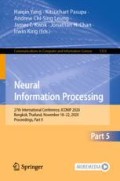Abstract
Functional connectivity (FC) patterns in human brain are dynamic in a task-specific condition, and identifying the dynamic changes is important to reveal the information processing processes and network reconfiguration in cognitive tasks. In this study, we proposed a comprehensive framework based on high-order singular value decomposition (HOSVD) to detect the stable change points of FC using electroencephalogram (EEG). First, phase lag index (PLI) method was applied to calculate FC for each time point, constructing a 3-way tensor, i.e., connectivity \( \times \) connectivity \( \times \) time. Then a stepwise HOSVD (SHOSVD) algorithm was proposed to detect the change points of FC, and the stability of change points were analyzed considering the different dissimilarity between different FC patterns. The transmission of seven FC patterns were identified in a task condition. We applied our methods to EEG data, and the results verified by prior knowledge demonstrated that our proposed algorithm can reliably capture the dynamic changes of FC.
Access this chapter
Tax calculation will be finalised at checkout
Purchases are for personal use only
References
Allen, E.A., Damaraju, E., Plis, S.M., Erhardt, E.B., Eichele, T., Calhoun, V.D.: Tracking whole-brain connectivity dynamics in the resting state. Cereb. Cortex 24(3), 663–676 (2014)
Bassett, D.S., Wymbs, N.F., Porter, M.A., Mucha, P.J., Carlson, J.M., Grafton, S.T.: Dynamic reconfiguration of human brain networks during learning. Proc. Nat. Acad. Sci. 108(18), 7641–7646 (2011)
Cohen, J.R.: The behavioral and cognitive relevance of time-varying, dynamic changes in functional connectivity. NeuroImage 180, 515–525 (2018)
Delorme, A., Makeig, S.: Eeglab: an open source toolbox for analysis of single-trial eeg dynamics including independent component analysis. J. Neurosci. Methods 134(1), 9–21 (2004)
Dimitriadis, S.I., Laskaris, N.A., Tsirka, V., Vourkas, M., Micheloyannis, S., Fo-topoulos, S.: Tracking brain dynamics via time-dependent network analysis. J. Neurosci. Methods 193(1), 145–155 (2010)
Gonzalez-Castillo, J., Bandettini, P.A.: Task-based dynamic functional connectiv-ity: recent findings and open questions. Neuroimage 180, 526–533 (2018)
Han, C., Li, P., Warren, C., Feng, T., Litman, J., Li, H.: Electrophysiological evidence for the importance of interpersonalcuriosity. Brain Res. 1500, 45–54 (2013)
Kang, M.J., et al.: The wick in the candle of learning: epistemic curiosity activates reward circuitry and enhances memory. Psychol. Sci. 20(8), 963–973 (2009)
Khambhati, A.N., Sizemore, A.E., Betzel, R.F., Bassett, D.S.: Modeling and inter-preting mesoscale network dynamics. NeuroImage 180, 337–349 (2018)
Leonardi, N., et al.: Principal components of functional connectivity: a new approach to study dynamic brain connectivity during rest. NeuroImage 83, 937–950 (2013)
Leonardi, N., Van De Ville, D.: Identifying network correlates of brain states using tensor decompositions of whole-brain dynamic functional connectivity. In: 2013 International Workshop on Pattern Recognition in Neuroimaging, pp. 74–77. IEEE (2013)
Mahyari, A.G., Zoltowski, D.M., Bernat, E.M., Aviyente, S.: A tensor decomposition-based approach for detecting dynamic network states from EEG. IEEE Trans. Biomed. Eng. 64(1), 225–237 (2016)
O’Neill, G.C., et al.: Measurement of dynamic task related functional networks using MEG. NeuroImage 146, 667–678 (2017)
Stam, C.J., Nolte, G., Daffertshofer, A.: Phase lag index: assessment of functional connectivity from multi channel eeg and meg with diminished bias from common sources. Hum. Brain Mapp. 28(11), 1178–1193 (2007)
Valencia, M., Martinerie, J., Dupont, S., Chavez, M.: Dynamic small-world behav-ior in functional brain networks unveiled by an event-related networks approach. Phys. Rev. E 77(5), 050905 (2008)
Wang, J., et al.: To know or not to know? theta and delta reflect complementary information about an advanced cue before feedback in decision-making. Front. Psychol. 7, 1556 (2016)
Womelsdorf, T., et al.: Modulation of neuronal interactions through neuronal synchronization. Science 316(5831), 1609–1612 (2007)
Wu, Y., Zhou, X.: The p300 and reward valence, magnitude, and expectancy in outcome evaluation. Brain Res. 1286, 114–122 (2009)
Acknowledgments
This work was supported by National Natural Science Foundation of China (Grant No. 91748105), National Foundation in China (No. JCKY2019110B009), the Fundamental Research Funds for the Central Universities [DUT2019] in Dalian University of Technology in China, and the scholarships from China scholarship Council (No. 201706060263 & No. 201706060262). The authors would like to thank Dr. Peng Li for the provide of EEG data and Guanghui Zhang for the preprocessing work.
Author information
Authors and Affiliations
Corresponding author
Editor information
Editors and Affiliations
Rights and permissions
Copyright information
© 2020 Springer Nature Switzerland AG
About this paper
Cite this paper
Liu, W., Wang, X., Ristaniemi, T., Cong, F. (2020). Identifying Task-Based Dynamic Functional Connectivity Using Tensor Decomposition. In: Yang, H., Pasupa, K., Leung, A.CS., Kwok, J.T., Chan, J.H., King, I. (eds) Neural Information Processing. ICONIP 2020. Communications in Computer and Information Science, vol 1333. Springer, Cham. https://doi.org/10.1007/978-3-030-63823-8_42
Download citation
DOI: https://doi.org/10.1007/978-3-030-63823-8_42
Published:
Publisher Name: Springer, Cham
Print ISBN: 978-3-030-63822-1
Online ISBN: 978-3-030-63823-8
eBook Packages: Computer ScienceComputer Science (R0)

